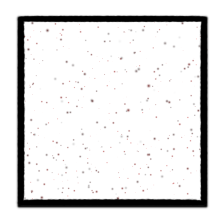Install Steam
login
|
language
简体中文 (Simplified Chinese)
繁體中文 (Traditional Chinese)
日本語 (Japanese)
한국어 (Korean)
ไทย (Thai)
Български (Bulgarian)
Čeština (Czech)
Dansk (Danish)
Deutsch (German)
Español - España (Spanish - Spain)
Español - Latinoamérica (Spanish - Latin America)
Ελληνικά (Greek)
Français (French)
Italiano (Italian)
Bahasa Indonesia (Indonesian)
Magyar (Hungarian)
Nederlands (Dutch)
Norsk (Norwegian)
Polski (Polish)
Português (Portuguese - Portugal)
Português - Brasil (Portuguese - Brazil)
Română (Romanian)
Русский (Russian)
Suomi (Finnish)
Svenska (Swedish)
Türkçe (Turkish)
Tiếng Việt (Vietnamese)
Українська (Ukrainian)
Report a translation problem


 Kuwait
Kuwait 























⠀⠀⠀⠀⠀⠀⠀⠀⠀⠀⠀⠀⠀⠀⢀⡴⠊⠁⠀⠀⠀⠀⠈⠙⢦⡀⠀
⠀⠀⠀⠀⠀⠀⠀⠀⠀⠀⠀⠀⠀⠀⡜⠀⠀⠀⠀⠀⠀⠀⠀⠀⠀⢳⠀
⠀⠀⠀⠀⠀⠀⠀⠀⠀⠀⠀⠀⠀⠀⡇⠀⠀⠀⠀⠀⠀⠀⠀⠀⠀⠈⡇
⠀⠀⠀⠀⠀⠀⠀⣀⠤⢄⣀⠀⠀⠀⡇⠀⠀⠀⠀⢰⣶⠄⠀⠀⠀⠀⡇
⠀⠀⠀⠀⠀⡴⡋⠀⠀⠀⡨⠓⣄⠀⢳⠀⠀⠀⠀⠀⠉⠀⠀⠀⢀⡼⠀
⠀⠀⠀⢀⡞⠀⢸⠓⠒⢺⡀⠀⠈⢣⠈⡇⠀⠀⠀⠀⠀⢠⡤⠴⠋⠀⠀
⠀⠀⠀⡼⠒⠒⢏⠀⠀⠀⠙⣦⠖⠉⢧⡿⠀⠈⠙⡖⠚⠉⠀⠀⠀⠀⠀
⠀⠀⡖⢧⡀⠀⠈⣦⡤⠤⠊⡏⣀⡴⠊⡹⠀⣠⠞⠀⠀⠀⠀⠀⠀⠀⠀
⢶⡞⡟⠦⣌⡓⠾⠥⠤⠴⠒⠋⣁⠴⢊⣤⠞⠁⠀⠀⠀⠀⠀⠀⠀⠀⠀
⠀⠀⡇⠀⠀⢉⣙⣒⣒⣒⣚⣉⠁⠀⢣⡤⠃⠀⠀⠀⠀⠀⠀⠀⠀⠀⠀
⠀⠀⠙⠒⠒⠚⠒⠋⠉⠉⠀⠈⠓⠚⠁⠀⠀⠀⠀⠀⠀⠀⠀⠀⠀⠀⠀
⠄⠄⠄⢔⢑⢌⢎⢣⢫⠪⣃⠖⢌⡳⡳⣗⢯⡯⡧⡐⡁⠇
⠄⢀⠕⠡⡪⢂⠓⠃⠓⢇⠢⠱⠅⡱⠫⠞⠮⣏⢯⡗⡆⢊
⠄⠄⠌⠨⠈⠄⠄⢀⠄⢂⢕⣲⡢⣃⠄⠄⠄⠁⢣⠙⢎⠠
⠄⢑⠠⡑⠄⠨⠨⠠⠄⡢⠉⡊⠫⡆⠄⠈⢂⠁⢐⢽⢸⢐
⠠⢐⠑⡔⡁⢄⡠⡄⡆⠄⠄⡂⡀⢸⡳⡦⣤⢦⡤⣷⢸⢸
⠄⡂⠡⡒⢖⠱⠨⡈⠢⡕⢌⢎⣢⡲⢝⢮⡫⣝⡺⡩⡲⠈
⠐⡈⡐⡈⠄⠉⠨⠪⣀⠶⠶⠴⠸⢬⠋⢜⠎⢀⠰⠢⢑⢁
⠄⠠⢂⢂⠈⠄⠄⢑⠄⠄⠄⠄⠄⠄⠑⠢⠄⠊⢨⠑⡂⠄
⠂⠄⠄⢂⠌⠄⢀⠂⠃⠄⠄⠂⠄⠄⠄⡁⠌⠂⡂⠄⢁⠐
⢕⠄⠄⠡⠐⡂⢅⠐⡀⠄⠄⠄⢀⢁⠨⢀⠄⠄⠄⠄⠊⠠
https://youtu.be/4rE6eiSB5UA?si=miOi7Hn3V14rZFIH
⠀⡇⠀⠀⠑⡄⠼⠗⠒⠒⠒⠒⠿⠁⢀⠔⠋⢀⠀⡇
⠀⣧⠀⠠⠊⠀⠀⠀⠀⠀⠀⠀⠀⠀⠀⠀⠈⠢⡀⠀⣾
⠀⢹⣼⠀⠀⠀⠀⠀⠀⠀⠀⠀⠀⠀⠀⠀⠀⠀⠰⣴⠇
⠀⢠⡇⠀⠀⠀⠀⠀⠀⠀⠀⠀⠀⠀⠀⠀⠀⠀⠀⠀⣿
⠀⢸⡇⠀⠀⠶⢦⡀⠀⠀⠀⢀⣠⡤⠀⠀⠀⠀⠀⣿
⠀⠤⢷⢒⣲⡄⠀⠀⣄⣄⡤⠈⠀⠀⣴⣒⢲⠯⠄
⠀⠈⠉⠳⢦⣤⠖⠛⢲⠀⠀⠀⢀⣀⣤⠶⠋⠉
⠀⠀⠀⠀⠀⡏⠀⢿⠋⠉⠉⠉⠉⠙⣦
⠀⠀⠀⠀⠀⢷⡀⠀⠀⠀⠀⠀⠀⠀⠀⠈⢧
⠀⠀⠀⠀⠀⠀⣿⠆⠀⠀⡇⠀⢠⠀⠀⢸⣇
⠀⠀⠀⠀⠀⠀⡿⠀⠀⠀⡇⠀⣟⡀⠀⣸⣍⢳⡄
⠀⠀⠀⠀⠀⠀⠓⠒⠒⠺⣅⣴⠿⠥⣼⠗⣋⡼⠁
⠀⠀⠀⠀⠀⠀⠀⠀⠀⠀⠀⠀⠀⠀⠉⠉⠉
˖⁺‧₊˚˖⁺‧₊˚ 𝐇𝐀𝐕𝐄 𝐀 𝐆𝐎𝐎𝐃 𝘿𝘼𝙔 💗 ˚₊‧⁺˖˚₊‧⁺˖
⠀⠀⠀⠀⣸⠁⢳⡀⣠⠈⠁⠀⠈⠉⠉⠉⠙⠒⠲⠴⣶⠶⠖⠒⢻
⠀⠀⠀⠀⡏⠀⣸⠟⠁⠀⠀⠀⠀⠀⠀⠀⠀⠀⠀⠀⠀⣠⣸⣶⠲⠂⡸
⠀⠀⠀⠀⢧⡰⠃⠀⠀⠀⠀⠀⠀⠀⠀⠀⠀⠀⠀⠀⠀⠘⣶⠃⠀⡰⠃
⠀⠀⠀⠀⢸⠃⢀⣀⠀⠀⠀⠀⠀⠀⠀⠀⠀⠀⠀⠀⠀⠀⠈⣠⠞⠁
⠀⠀⠀⣏⠛⠠⡟⠉⠧⠀⠀⠀⠀⠀⠀⣠⠞⠳⣦⠀⠀⠀⢀⣧⡀
⠀⠀⠀⢱⠀⠀⠀⠀⠀⢠⣙⣟⣰⠀⠀⠁⠀⠀⠉⠀⠀⠀⠀⠠⣯⠀ㅤ
⠀⠀⠀⠀⠑⢤⡀⠀⠀⠀⠀⠀⠀⠀⠀⠀⠀⠀⠀⠀⠀⠀⣠⠞⠁ㅤㅤㅤㅤㅤㅤㅤㅤㅤ
⠀⠀⠀⠀⠀⠀⠉⠒⠤⣄⣀⠀⠀⠀⠀⠀⣠⠖⢒⡦⠒⠋⠁
⠀⠀⠀⠀⠀⠀⠀⢀⠔⢉⠀⠀⠀⠀⠀:⠠⢔⠊ㅤㅤㅤㅤℎ𝑎𝑣𝑒 𝑎 𝑠𝑤𝑒𝑒𝑡 𝑑𝑎𝑦 <3
⠀⠀⠀⠀⠀⠀⠀⠘⠒⢻⡀⠀⠀⠀⠀⠀⠀⠈⠓⠒⢦⠀
⠀⠀⠀⠀⠀⠀⠀⠀⠀⠀⢳⡀⠀⠀⢀⣠⠴⠚⠓⠛⠁
⠀⠀⠀⠀⠀⠀⠀⠀⠀⠀⠀⠳⣄⣹⠉